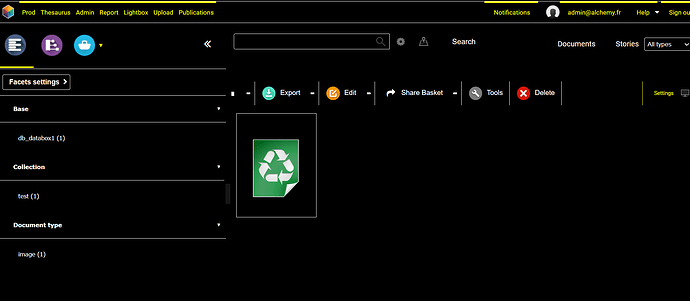Digital Asset Management
I’ve previously covered Nextcloud in-depth and have showcased many of its core features. Going forward, I’ll be showcasing a wide variety of interesting tools and ideas that can be implemented everywhere from the enterprise to the homelab environment. The next topic I’ll be covering here will be all about Digital Assset Management and some of the specialized tools available for use relating to it.
Digital asset management, as the name implies, is the process of managing your digital assets and content. Digital assets can include everything from images to videos to audio files to specialized graphics. Digital asset management is especially important for media-focused organizations and/or content creators who regulary deal with the creation and distribution of digital assets. Digital asset management can, in theory, benefit any organization that maintains a large volume of digital assets for subjects including product designs, marketing, infographics, digital guides, and video production.
Digital asset management tools primarily work by creating a central repository for the data to be managed. This usually takes the form of a centralized database containing data and metadata for the assets with the metadata further simplifying the process of organizing and retrieving assets. In addition, many digital asset management tools boast version control as a feature, making it simpler to manage changes made to the stored assets. Overall, digital asset management tools make it easy to organize assets, collaborate with others on the creation/modification of assets, and share assets with relevant stakeholders when needed.
There are many different tools for digital asset management available for use in both commercial and open-source offerings. As our ecosystem is primarily focused on open-source development, I’ll be detailing some of the open-source options available for users here.
Pimcore
Pimcore is a digital asset management tool that’s focused on managing digital assets and customer experiences. It contains many different packages that allow you to more closely fine-tune your implementation to meet your desired specifications. Pimcore boasts features beyond digital asset management including, product info management, customer info management, and digital commerce management. Pimcore boasts compatibility with a multitude of file formats, making it a viable option for most organizations and users looking for a digital asset management solution.
Pimcore offers a commercial version and an open-source version that can be set up manually or via Docker containers. Pimcore can be deployed on-prem, or in a private cloud setup. There are also Enterprise and Platform as a Service (PaaS) versions offering long-term support and additional security features for on-prem and cloud deployments for a subscription fee.
One important note I’ll make about Pimcore is that there are two “deployment” types available. There’s a “demo” image which has many features pre-configured and a “skeleton” image which has the bare minimum configured. Due to the complexity behind configuring Pimcore, it may be best suited for enterprises with an IT background and home-lab enthusiasts. The official Pimcore documentation, including the installation guide through Docker, can be found here: Docker-Based Installation | Pimcore Development Documentation.
Phraseanet
Phraseanet is a digital asset management tool that aims to be a complete open-source platform. It used a web UI for management and offers the typical features you can find in most digital asset management tools. There are safety features in place to isolate duplicate uploads, new versions of prior uploads, and any files that do not meet criteria set by its users. For those of you familiar with the ELK Stack, Phraseanet using Elasticsearch as its backbone engine for managing information recorded by Phraseanet.
Phraseanet can be installed manually or through a Docker container. If you want to demo Phraseanet, you can request an online demo, the details of which can be found here: Online Demo | Phraseanet - Open Source Digital Asset Management software. The official Phraseanet documentation, including the installation guides, can be found here: Download — Phraseanet 4.1 documentation.
Overall, Phraseanet can be a viable tool for any size organization. If deploying on-premises, having organization members with in-depth IT knowledge may be required to install and maintain Phraseanet.
AtroDAM
AtroDAM is another digital asset management tool with an open-source and commercial version. What’s notable about this tool is its integration capabilities with other tools in the AtroCore suite. These include tools such as AtroPIM which is a product information management system. There are additional modules for AtroDAM and AtroPIM that are locked behind a paywall, however. In addition, there are purchaseable support packages for AtroCore products if needed. Either way, the modular nature and customization options available with the AtroCore ecosystem make it a viable tool for everything from enterprise to small-scale deployments.
This tool appears to require a manual installation, the process of which requiring a basic LAMP setup. AtroDAM can be deployed on-premises or as Software as a Service (SaaS). The official installation guide can be found here: Installation | AtroCore Help Center. There is also a free demo of AtroDAM available; the details of which can be found here: GitHub - atrocore/atrodam: AtroDAM is an open-source digital asset management system (DAM) of a new generation..


